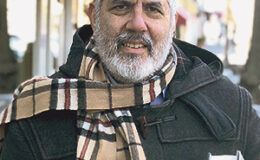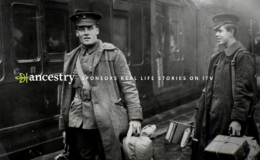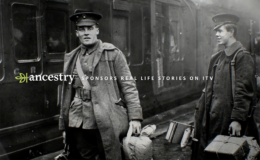
For Shauna Harrison, her journey from only child to a sister with 29 siblings started with a revisit to her 23andme profile.
Having known for more than a decade she was conceived by sperm donor, she took a test from the DNA service in 2013 to learn more about her family history.
As a fitness trainer with a PhD in public health, she wanted to know more about her health history. The site didn’t have much health information at the time, said Harrison, so she didn’t return until 2017.
When she changed her profile from anonymous to public, she discovered she had a half-sibling, sharing the same donor.
“The next day, I got an email from one of the siblings that said ‘Hey, looks like we’re related. Not sure if that’s a surprise to you,'” Harrison, 41, recently told USA TODAY.
That sibling was Stephen Bisordi, 40, who had started a Facebook group years before with three other siblings so they could all connect. He said he discovered he was a donor child around age 11 or 12, because his father was unable to have kids.

“I’m grateful,” Bisordi said of his newfound siblings. “It’s an interesting situation to be in.”
Roughly a month ago, the group had a total of 30.
“It kind of goes in waves, where every month we’re getting a new sibling,” she said. “Sometimes we’ll go for a little while without getting one.”
The first big gathering with the siblings who have made contacted happened in 2017 in the San Francisco Bay Area, Bisordi said, when 10 of them gathered at Harrison’s house.
Some of the siblings say they’re not interested in meeting the donor, instead choosing to focus on the new relationships with brothers and sisters.
“I appreciate what he did, obviously,” Bisordi said. “Unless he had interest in meeting me as well, it was never that big of a deal.”
‘At first, it was a lot of shock’
Harrison was one of four born in the same year, along with Jodi Hale, 41. Hale found out she was conceived by donor at 23. Her dad had a genetic condition causing him to go blind as a young adult, and her parents chose a donor to avoid passing on the condition.
Hale was an only child like Harrison, and in September 2017, she took a DNA test to discover her health history and found her siblings. She was the 15th to join the group, she said.
“I’ve spent way more time with my siblings the last couple of years than I have with a lot of my friends,” she said. “For a while, it will become really time-consuming because you’re going to meet a new sibling every week.”
More:These are the top companies offering genealogical DNA testing to learn about your family
Ben Clark, 40, said he discovered he was donor-conceived about a year and a half ago, after his parents explained they were concerned about passing down the risk of cancer to their children.
With help from his wife, Clark found Hale’s Facebook page and the sibling group.
Clark took the DNA test to confirm he was also a sibling, the 16th in the group. He has a younger sister who also shared the same donor, making them one of three sets of full siblings in the group.
“At first it was a lot of shock, just kind of adapting to the situation,” said Clark, who is two days older than his half-brother, Bisordi. “Once getting over the shock and getting to know a lot of the people, it’s been an amazing experience.”
‘Are we going to have 40 siblings?’
Harrison said there are still siblings out there they have yet to connect with because their profiles on 23andme are anonymous.
As one of the earliest members to discover his siblings, Bisordi said he tries a gentle approach when a new family member makes the discovery.
“I’m still sort of cautious, definitely willing to share as much as they want to know as quickly as they want to know,” he said. “But I’m not going to dump it on them without asking.”
Since then, they stay in touch through places such as the Facebook group. Most of them live in the Bay Area, where they connect over sports as fans of the Golden State Warriors and San Francisco 49ers.
Harrison said one of the benefits of meeting her new half-siblings is finding people who understand not only that “our dad is not our biological father,” but they were birthed through a donor.
“That’s a very different way to think about your identity and have to grapple with that. Having people who have been through the same thing and who can share not just that experience but literally share your DNA with you is very helpful.”
The group is currently at 30, but all the siblings expect that number to get bigger. The story of these siblings also isn’t uncommon. The Donor Sibling Registry, a non-profit organization which helps people conceived through donors connect with potential relatives, features stories including one in 2017 of a group of 23 siblings.
“It’s definitely become a world of uncertainty,” Clark said. “You never know. Are we going to have 40 siblings? Are we going to have 200 siblings by the time this is all done? Will it ever be done, or am I still going to find new people when I’m 90 years old?”
Follow Brett Molina on Twitter: @brettmolina23.















